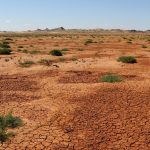 October 1, 2020 12:08 pm
Published by Climate Extremes
October 1, 2020 12:08 pm
Published by Climate Extremes
Australia researchers are calling on storm chasers and members of the general public fascinated by severe weather to take part in a citizen science project that will help better capture the occurrence of extreme weather events and improve our ability to forecast them.
 September 24, 2020 10:22 am
Published by Climate Extremes
September 24, 2020 10:22 am
Published by Climate Extremes
CLEX researchers examined the uncertainties of the input data of three commonly used drought indices, with the data coming from different sources, including observations and reanalysis. The ability of these indices to detect drought was assessed against soil moisture from multiple global land surface models.
 September 16, 2020 2:04 pm
Published by Climate Extremes
September 16, 2020 2:04 pm
Published by Climate Extremes
Amidst the Victorian lockdown Kim Reid has escaped into her favourite video games and found that many of them carry a powerful environmental message.
 September 4, 2020 8:46 am
Published by Climate Extremes
September 4, 2020 8:46 am
Published by Climate Extremes
Where does our rain come from? For a drought-prone continent like Australia, and a country with communities and industries affected by drought and flooding rains, the answer to that question is of vital importance.
 August 28, 2020 9:30 am
Published by Climate Extremes
August 28, 2020 9:30 am
Published by Climate Extremes
High resolution ocean modelling has found the world’s strongest ocean currents, which play key roles in fisheries and ocean ecosystems, will experience more intense marine heatwaves than the global average over coming decades.
 August 11, 2020 10:25 am
Published by Climate Extremes
August 11, 2020 10:25 am
Published by Climate Extremes
CLEX researchers and colleagues investigated how El Niños may change in the future using paleoclimate data in combination with CMIP5 and CMIP6 model runs.
 August 11, 2020 10:01 am
Published by Climate Extremes
August 11, 2020 10:01 am
Published by Climate Extremes
Comparing past and future changes in Southern Hemisphere monsoons has revealed how they will alter with climate change under a business-as-usual scenario.
 August 10, 2020 4:49 pm
Published by Climate Extremes
August 10, 2020 4:49 pm
Published by Climate Extremes
Organised nighttime thunderstorms can sometimes occur without a surface cold pool. CLEX researchers investigated how this could occur and still support storms.
 August 10, 2020 3:58 pm
Published by Climate Extremes
August 10, 2020 3:58 pm
Published by Climate Extremes
CLEX researchers and colleagues find soil moisture variations need to be considered over at least a decade before a steady-state assumption can be made.
 August 10, 2020 3:34 pm
Published by Climate Extremes
August 10, 2020 3:34 pm
Published by Climate Extremes
Observations over Kuala Lumpur and climate model experiments reveal how the warmth of cities compared to the surrounding area enhance extreme rainfall events.










